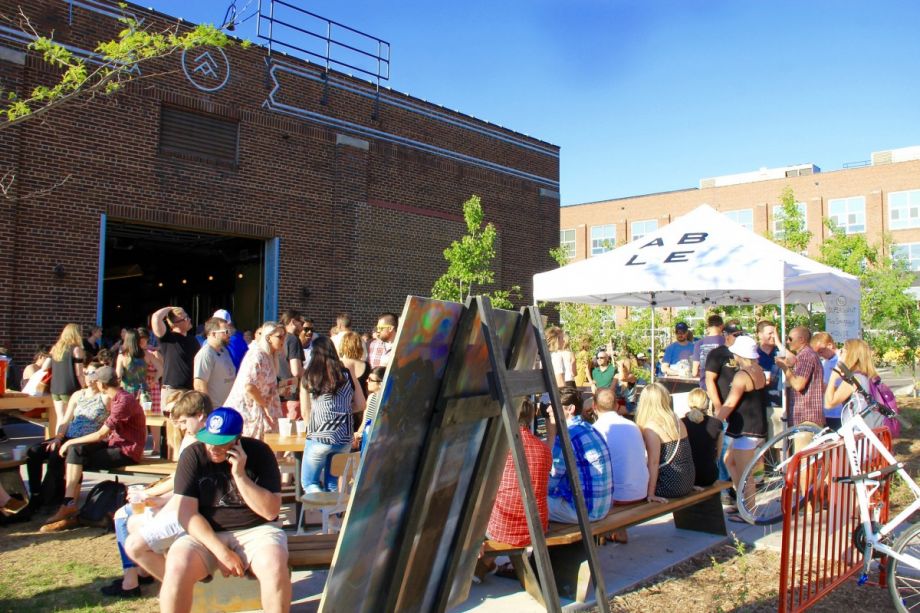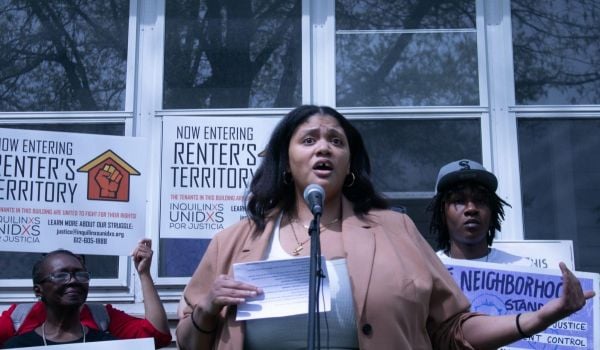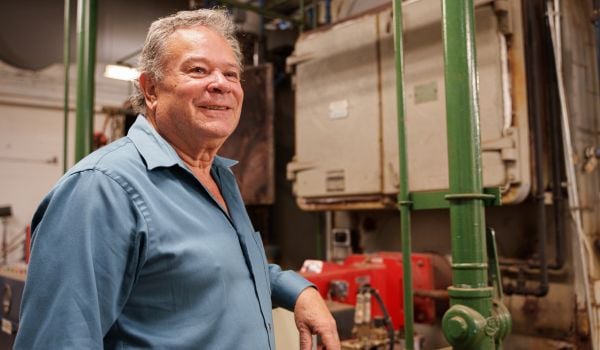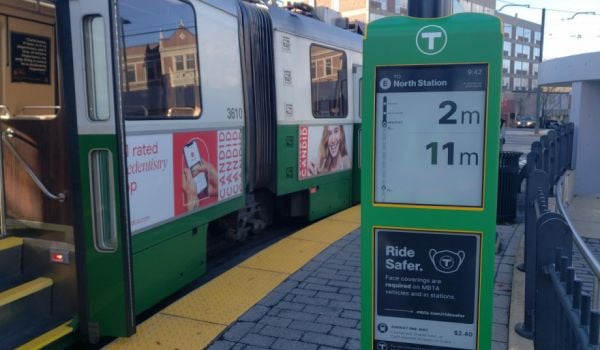Each year on the third weekend in May, Minneapolis residents take to the streets of Northeast Minneapolis’ Arts District by the tens of thousands to participate in Art-a-Whirl, the largest artist open studio tour in the country. Always free and open to the public, this year’s drizzly festivities featured nearly 800 artists across mediums and over 60 different locations from galleries to homes to storefronts and more.
Art-a-Whirl began in 1996 as a way for a handful of Northeast-based artists to showcase their work and drum up interest from a few individually invited local buyers. The following year, the Northeast Minneapolis Arts Association (NEMAA), a non-profit artist collective, was formed to support and promote the artists who had flocked to the area in search of affordable live/work options. For years the community of makers thrived, as did Art-a-Whirl. However, as the arts community in Northeast — locally referred to as Nordeast — grew, so did the commodification of arts culture.
Historically a blue-collar and largely Eastern European community, Northeast was transformed when major industries left the neighborhood in the 1980’s and left large, unregulated warehouses in their wake. Once filled with a community of fine artists, Northeast has largely been replaced with developed, regulated spaces home to tech companies and mass-produced art created by design firms, explains Dr. Brittany Lewis, a researcher at the University of Minnesota’s Center for Urban and Regional Affairs.
Lewis led a survey-based study on the gentrification of Northeast Minneapolis which found, among other things, that “the act of creative placemaking has driven Northeast Minneapolis’ unique form of gentrification in the Twin Cities,” with Art-a-Whirl as a telltale sign of that change. What was once a small, invite-only event designed to fund artists is now a mega party that draws roughly 30,000 visitors who spend more time at the breweries and outdoor music performances throughout the district than buying or even looking at art. “Now it’s more like Mardi Gras than any kind of real fine arts event,” one survey respondent told Lewis’ team.
Interestingly, all of this has occurred in spite — or, in some ways, because — of the Northeast arts association’s creation of an Arts Action Plan in 2003.
Designed to sustain and support the already dwindling artists’ community, the action plan looked at what happened to similar artist enclaves in cities like New York and San Francisco and set out to spare Nordeast from the same fate. “Looking into the future, the community and artists’ population of Northeast decided to attempt to forestall what many consider to be an inevitable social change and try to keep the area as an artists’ community for the long-term,” the plan said.
It featured eight recommendations, each with a handful of sub-recommendations with an eye towards everything from securing sustainable and affordable spaces for artists to live and work to imploring the city to use the plan as a template for a city-wide Cultural Plan to formally establishing the Northeast Arts District designation that exists today.
“The whole point of the Arts Action Plan was to recognize formally that this neighborhood has an importance as an arts neighborhood and as an arts district,” explains Greg Foley, a Minneapolis-based artist and president of NEMAA’s board of directors. “It put goals and strategies around [that objective] and some were achieved, and some are still being considered and worked towards.”
On the affordable spaces front, Foley notes that 35 live/work apartments were created in 2013 when Artspace Jackson Flats opened. In terms of better supporting the artists that live in Northeast, the arts association has begun to offer technical programming designed to help artists with everything from selling their art to building websites and crafting business plans. Some of the more ambitious goals, like creating a co-op bank or credit union specifically for artists, haven’t happened.
Foley does see gentrification taking place despite NEMAA’s’s best efforts, but with a caveat. “The owners who own the big art studios — the Northrup King Building, the California Building, and the Grain Belt Building — they are all very aware of the impact of their buildings on the neighborhood,” he says, noting that they have remained dedicated to artists. “[They] have really stuck it out and continue to provide mission-based real estate.” While the 2003 plan has by no means been discarded, it’s not the centerpiece of NEMAA’s efforts as it once was while plans to make an updated plan have been put on hold. “Because we’re also primarily a member-based organization, we are working to provide those programs that most benefit our members and hope that, at the same time, it really fits within the framework of the action plan,” Foley says.
While a few important holdouts remain, many of the cultural elements that made Northeast what it once was have largely been unable to hang on, in some ways because the Arts Action Plan worked a little too well.
“Everything is regulated and professionalized. There’s this loss of culture, it’s not just replacement of space,” Lewis says. She continues by telling the story of one of her respondents, a small business owner who used to give free coffee to people experiencing homelessness. Now, however, Minneapolis’s homeless population has been policed out of Northeast and into other locales, and this business owner now spends her days chatting with empty nesters or young professionals, many of whom work for the city’s major corporate employers.
“I would argue that the Arts Action Plan had a huge part to play [in the gentrification] because there’s always divided interests,” Lewis says. “The City of Minneapolis had its own interests. Arts areas and arts districts are huge revenue-generating forces for cities. The artists at the table had [their] interests but the city… [was] trying to make it denser and increase the tax base and attract private developers.”
For Lewis, the question comes down to this: Who benefits? Cities have the power to mitigate the negative impacts of gentrification, but doing so would require investing money in existing neighborhoods as opposed to focusing on bringing private, outside money in. One way that cities interested in preserving the genuine culture and affordability of arts districts, formal and informal, is by reconfiguring how affordability is calculated.
“Cities are using HUD’s median income to determine what’s affordable, but because our geographic area includes outer ring suburbs like Bloomington, our median income goes up … But if you look at North [Minneapolis], the median income is $30,000,” Lewis says. When cities use HUD benchmarks to designate affordable housing, the only outcome urban neighborhoods will see is gentrification pressure in one form or another, wiping out the culture and community that made it a desirable location in the first place in the process.
“There has to be an intentional education of people of the value of art and this history of fine art and the time it takes to make it — a revaluing of those artistic expressions and money invested in different artists’ residencies that severely subsidize these artists’ ways of living,” she says. “Because before, it was super cheap — they didn’t need to be subsidized.”

Cinnamon Janzer is a freelance journalist based in Minneapolis. Her work has appeared in National Geographic, U.S. News & World Report, Rewire.news, and more. She holds an MA in Social Design, with a specialization in intervention design, from the Maryland Institute College of Art and a BA in Cultural Anthropology and Fine Art from the University of Minnesota, Twin Cities.
Follow Cinnamon .(JavaScript must be enabled to view this email address)
















